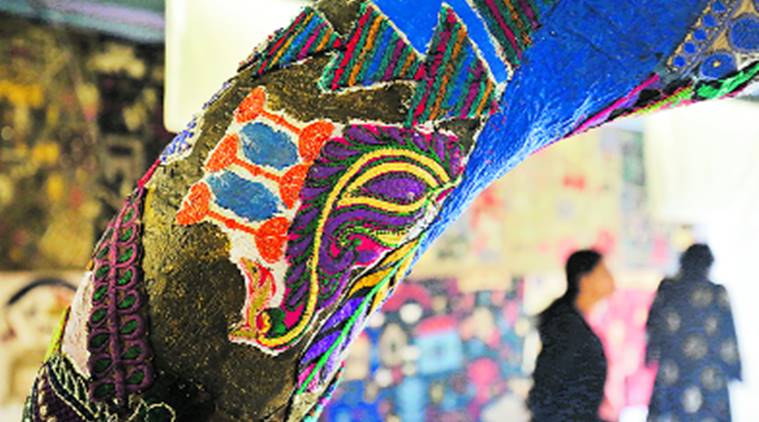Written by Divya A |Updated: March 7, 2019 8:28:56 am
An exhibition in the Capital is a precursor to India’s first series of handmade textile biennales, to be held over the next three years
The conversation was part of a dialogue with a group of artisans from across the country, such as Jan, on the sidelines of an exhibition to announce the country’s first handmade textile biennales, for which the Ministry of Textiles has partnered with AHF. “

We are living in an age of machines and artificial intelligence (AI) but nothing can beat the emotional intelligence (EI) of an artisan when he is working on a fabric,” said textile conservationist Rajeev Sethi, while responding to a comment by Srinagar-based Pashmina embroidery artist Bashir Ahmad Jan, on how “machine-made stuff and commerce have sidelined their craft lately”. “With your EI you will always stay one step ahead of AI. What is urgently required is an effort to reposition your skills vis-a-vis market forces,” added Sethi, Founder Trustee and Chairman of Asian Heritage Foundation (AHF), a Delhi-based organisation working with craftspersons from across the continent.
The conversation was part of a dialogue with a group of artisans from across the country, such as Jan, on the sidelines of an exhibition to announce the country’s first handmade textile biennales, for which the Ministry of Textiles has partnered with AHF. “The aim of the biennales is to reposition the skill of these textile artisans and give them a pehchaan before these traditions move to the museum,” said Sethi.
An official from the Ministry of Textiles said, “Five different biennales spanning five hallmark textile traditions of India — brocade, khadi, chintz, embroidery and ikat — will be held in five different cities. These events will become the city’s property so that the city could become a stakeholder in its development, every two years, not just as a celebration of nostalgia, but also looking at aspects like trade, market, livelihood and transdisciplinary discourse.” Sethi added, “It’s not just India; a lot of people can join us with similar concerns all over the world during the biennales. For instance, while the gold and silver thread embroidery or brocade is a living tradition in India, it has its origins in Byzantium and China. Even chintz textiles are popular in several parts of Europe owing to the colonial past, and is made in Indonesia, Nigeria and Ghana besides India.”

While the finer details are still being worked out and more partners will be involved in due course, including the respective state governments, the four-day curtain-raiser exhibition at the newly refurbished Handloom Haat, Janpath, comprises 110 items sourced from AHF, the artisans’ own collections, several personal collections and from those of textile revivalists Kamaladevi Chattopadhyay and Martand Singh, stored at Crafts Museum, Pragati Maidan.
Designed by Siddhartha Chatterjee of See Change, the display comprises saris, dupattas, turbans, upholstery, khadi rugs and furnishings, among others.
Interestingly, the curtain-raiser is being held at the very grounds from where India reimagined its creative identity post- Independence, through a group of visionaries who laid the foundation of National Handicrafts and Handloom Museum in 1956. It was only in the 1980s that the display shifted to Pragati Maidan, where it stands today as the Crafts Museum. Raghvendra Singh, Secretary, Ministry of Textiles, said, “The effort is also to revive handmade textile traditions of India, which gave the country its identity in the past.”
The exhibition is on till March 8 at Handloom Haat, Janpath






















No hay comentarios:
Publicar un comentario